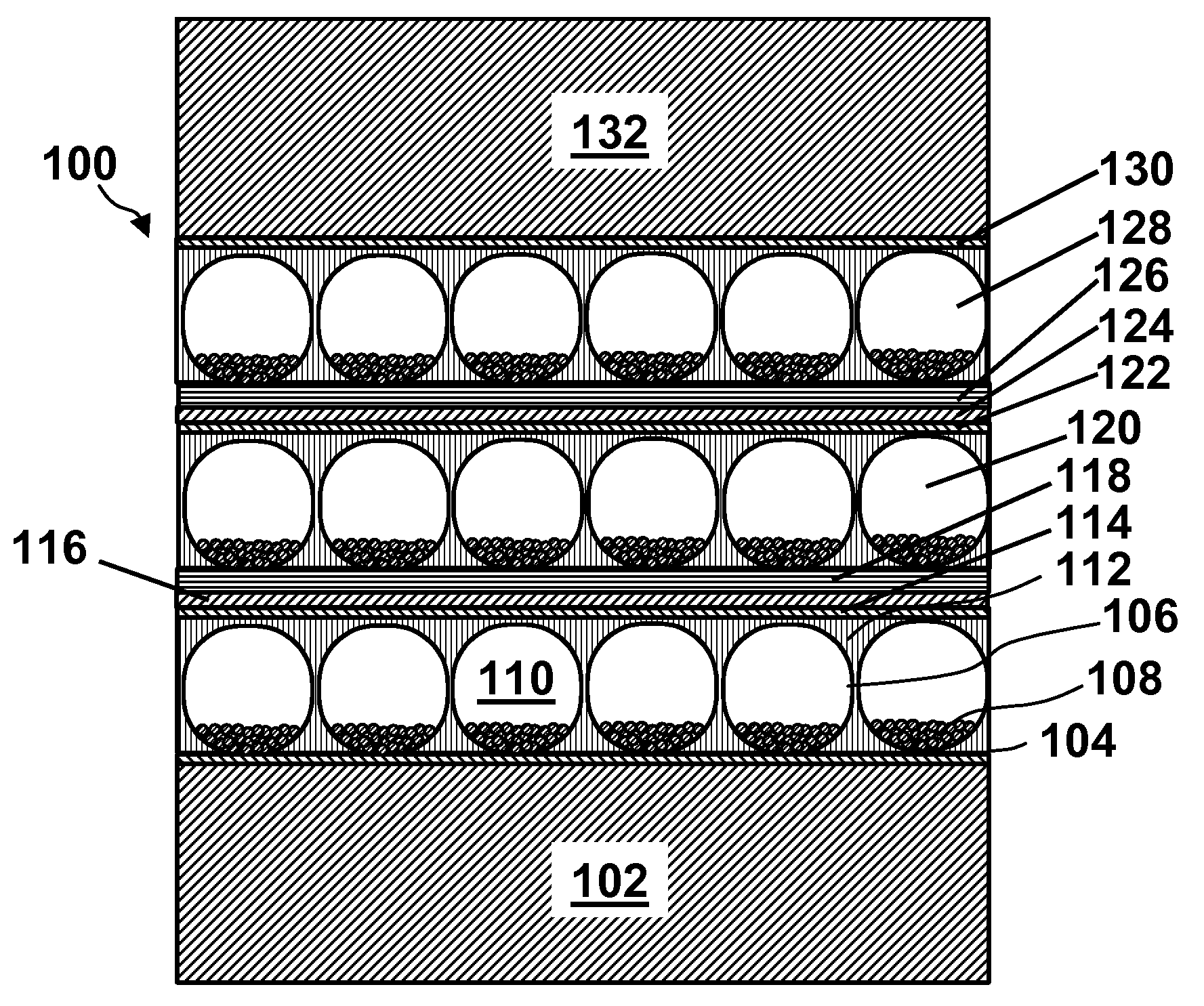Multi-layer light modulator
a light modulator and multi-layer technology, applied in the field of multi-layer light modulators, can solve the problems of inadequate service life of these displays, unable to meet the needs of users, and gas-based electrophoretic media are susceptible to the same types of problems, so as to achieve the effect of reducing light loss
- Summary
- Abstract
- Description
- Claims
- Application Information
AI Technical Summary
Benefits of technology
Problems solved by technology
Method used
Image
Examples
Embodiment Construction
[0033]As indicated above, the present invention provides a light modulator comprising a plurality of discrete variable transmission electro-optic layers arranged so that light will pass successively through the plurality of layers. Typically the electro-optic or VT layers of the light modulator will be in the form of thin flat sheets having a width (in the plane of the sheet) much greater (say at least an order of magnitude greater) than the thickness of the sheet (perpendicular to the plane of the sheet). A stack of such thin sheets, preferably held together by optically clear adhesive between the sheets, can be produced in a form resembling a pane of glass, and thus suitable for use in a conventional window frame or similar glass-mounting device. Alternatively, such a stack of thin sheets can be mounted between two transparent, and typically rigid, sheets of glass, polymer or other material to produce a composite sheet which can readily be used in place of a pane of glass in a con...
PUM
| Property | Measurement | Unit |
|---|---|---|
| thickness | aaaaa | aaaaa |
| thickness | aaaaa | aaaaa |
| transmission range | aaaaa | aaaaa |
Abstract
Description
Claims
Application Information
 Login to View More
Login to View More - R&D
- Intellectual Property
- Life Sciences
- Materials
- Tech Scout
- Unparalleled Data Quality
- Higher Quality Content
- 60% Fewer Hallucinations
Browse by: Latest US Patents, China's latest patents, Technical Efficacy Thesaurus, Application Domain, Technology Topic, Popular Technical Reports.
© 2025 PatSnap. All rights reserved.Legal|Privacy policy|Modern Slavery Act Transparency Statement|Sitemap|About US| Contact US: help@patsnap.com



